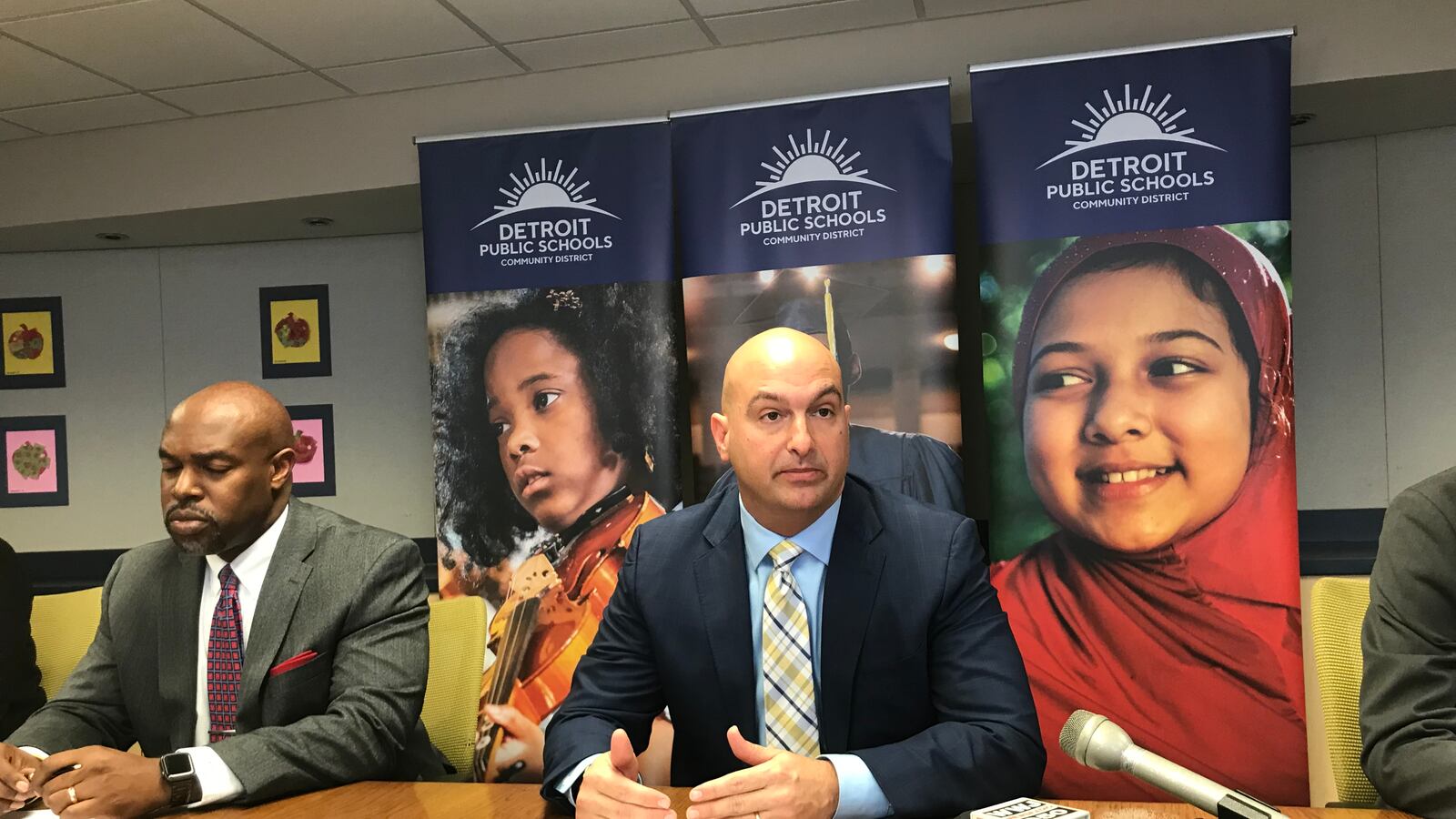Teaching students when they aren’t in the classroom isn’t easy, especially when students lack access to technologies that would make it easier to connect with their teachers.
Michigan’s largest school district has announced how it’s going to try.
Detroit Public Schools Community District was among the first districts to release its plan for distance learning after Gov. Gretchen Whitmer closed school buildings through the rest of the school year to help curb the spread of the coronavirus.
The plan matters not just because the district enrolls 50,000 students, but also because it is at the center of mounting concerns that the coronavirus crisis will exacerbate educational inequities. Superintendent Nikolai Vitti estimates that fewer than half of his students have access to the internet at home, putting them at a distinct disadvantage as their peers in wealthier districts turn to online instruction. Across the state, thousands of students, especially in low-income urban and rural districts, face the same problem.
Here are some of key points of the district’s 29-page plan, which goes into effect tomorrow. Scroll to the bottom of the page for the full document.
🔗How will academic instruction actually work?
The basic program will be the same for everyone: math and reading lessons every day, social studies and science a few days a week (most days for high schoolers). Students will also receive art, music, physical education, and health lessons once a week.
The format of the lessons will vary depending on each students’ access to technology. Those who lack access to the internet or a laptop at home will use paper packets; other students will be able to watch their teachers deliver lessons in online videos and complete some lessons online.
🔗How will the district provide special education services?
Students with special needs will receive a packet with activities designed to take one day per week. That’s in addition to the general math and English packets that all students are receiving.
Students will also work with their teachers and special education case workers to create a learning plan that takes into account other needs linked to their disabilities.
🔗What is expected of teachers?
The district and its teachers union, the Detroit Federation of Teachers, reached a detailed agreement about teacher responsibilities while school buildings are closed. They’ll be expected to hold class, either over the phone or through video conferences, for four hours a day. They’ll also need to be available to students during regular school hours.
Teachers also will train in online instruction and provide feedback on student work. Read the full union agreement here.
🔗What about students who lack access to the internet or a laptop?
The district will print learning packets for all students, and teachers are expected to attempt to stay in touch with students by phone. There’s a chance that business leaders will buy technology for Detroit students who don’t have it, but the district isn’t expecting that to happen until May, if it happens at all.
🔗Will students be graded for the work they do at home?
No. Teachers will tell students how they are doing on remote assignments, but they won’t hand out grades.
Students will still receive their last two report cards of the year, but their grades will be the same as they were on March 12. If students want to improve on those grades, they can ask their teachers for extra work.
🔗Will the district try to add to its calendar to make up for missed classroom time?
The district does not plan to alter its calendar for next school year.
District officials hope to hold expanded summer school offerings this summer if COVID-19 related restrictions are lifted in time. In any case, the district won’t require in-person summer learning because many Detroit schools lack air conditioning.
🔗What will all this cost the district?
It’s hard to say, mostly because this crisis isn’t over yet and no one knows how it will end. What’s more, the district’s cost calculations so far don’t take into account the possibility of savings on things like heat and bus service.
Still, we know that the district expects to spend $3.2 million to print packets for students, and another $2.9 million on food for students. If business leaders agree to help the district buy technology for students, the district would contribute up to $3 million.

